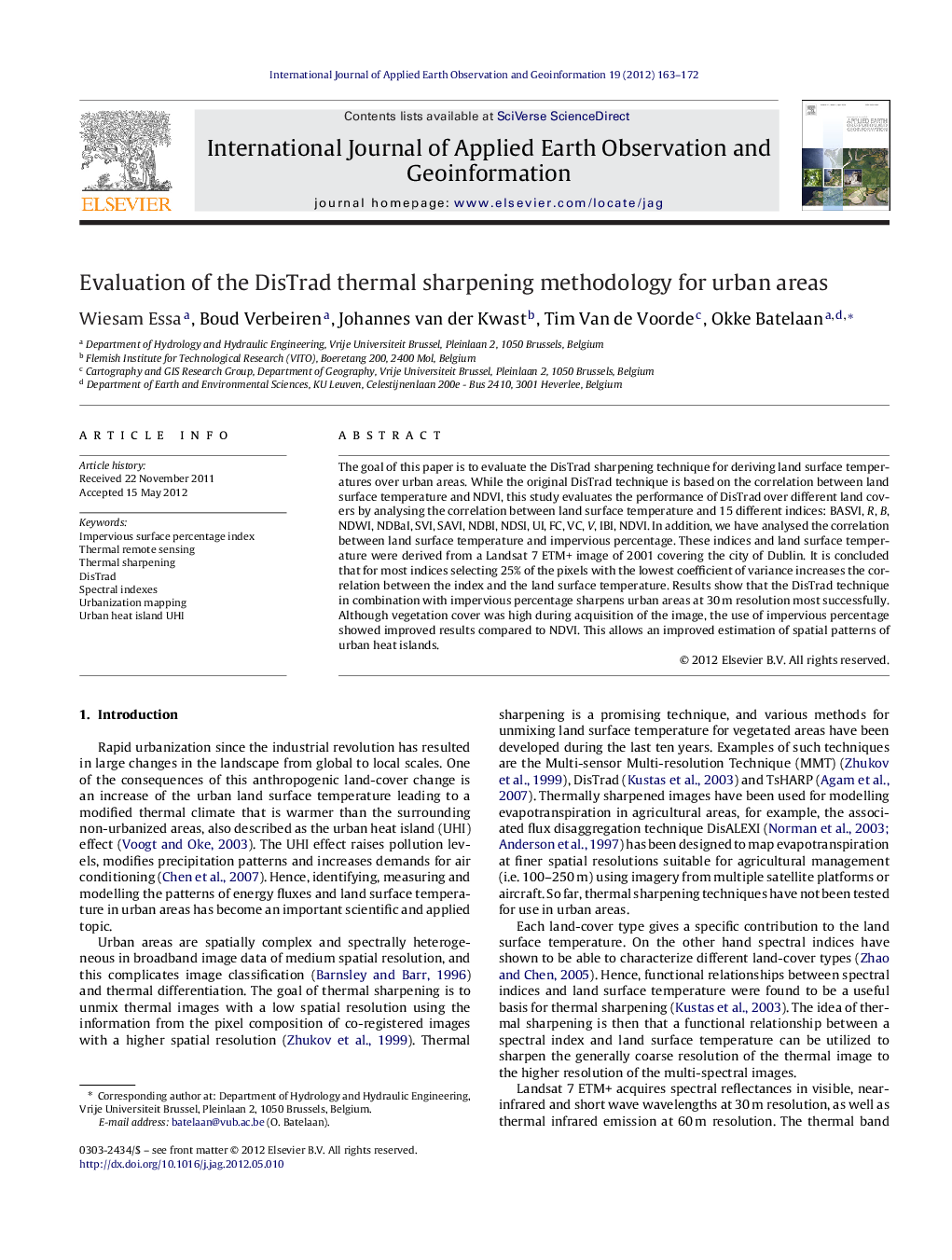| کد مقاله | کد نشریه | سال انتشار | مقاله انگلیسی | نسخه تمام متن |
|---|---|---|---|---|
| 4464980 | 1621841 | 2012 | 10 صفحه PDF | دانلود رایگان |

The goal of this paper is to evaluate the DisTrad sharpening technique for deriving land surface temperatures over urban areas. While the original DisTrad technique is based on the correlation between land surface temperature and NDVI, this study evaluates the performance of DisTrad over different land covers by analysing the correlation between land surface temperature and 15 different indices: BASVI, R, B, NDWI, NDBaI, SVI, SAVI, NDBI, NDSI, UI, FC, VC, V, IBI, NDVI. In addition, we have analysed the correlation between land surface temperature and impervious percentage. These indices and land surface temperature were derived from a Landsat 7 ETM+ image of 2001 covering the city of Dublin. It is concluded that for most indices selecting 25% of the pixels with the lowest coefficient of variance increases the correlation between the index and the land surface temperature. Results show that the DisTrad technique in combination with impervious percentage sharpens urban areas at 30 m resolution most successfully. Although vegetation cover was high during acquisition of the image, the use of impervious percentage showed improved results compared to NDVI. This allows an improved estimation of spatial patterns of urban heat islands.
► DisTrad sharpening technique evaluated for urban areas with 15 indices.
► Selecting 25% of pixels with lowest coefficient of variance increases T correlation.
► Impervious percentage improves DisTrad performance in urban areas.
► Even in seasons with high vegetation cover in the urban fabric I% is more accurate.
Journal: International Journal of Applied Earth Observation and Geoinformation - Volume 19, October 2012, Pages 163–172